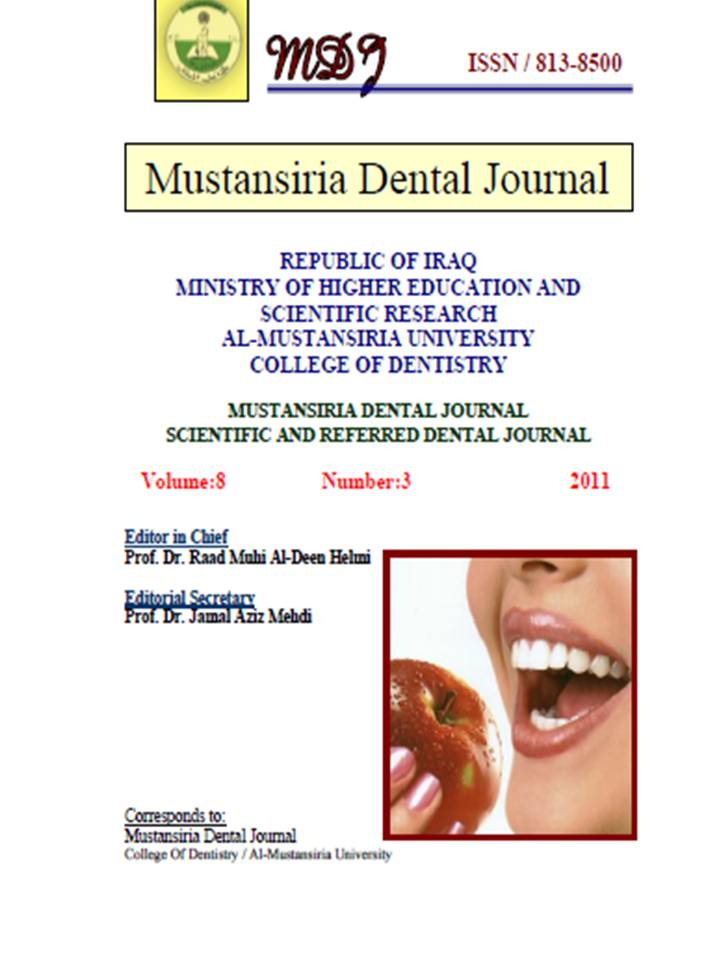Electronic apex locator determination of root canal length of permanent anterior teeth in children
DOI:
https://doi.org/10.32828/mdj.v8i3.337Keywords:
Key words: apex locator, tactile sensation, digital radiographAbstract
The success of endodontic treatment depends on the correct obtaining of working
length, and in Pediatric Dentistry, this procedure needs child's cooperation and expose
the children to x-ray radiation. The aim of the present study is to compare root canal
length determined by tactile sensation, electronic apex locator YD-2 and digital
radiograph with that determined by conventional x-ray which is the most used and
reliable method.
The working length of 30 upper permanent central incisors, in children aged 10-12
years old, estimated by tactile sensation, electronic apex locator YD-2 and digital
radiograph and the mean values of them compared by t-test with that obtained by
conventional x-ray.
High significant difference found between the mean value of root canal length
measurements obtained by tactile sensation with that obtained by conventional
radiograph (P<0.01), while no significant difference found between the mean of apex
locator and digital radiographic readings with that obtained by conventional
radiography(P>0.05) indicating the similarity of mean values of these techniques.
The use of electronic apex locator and digital radiograph are quite comparable
with conventional radiograph and could be useful in endodontic therapy for working
length estimation in children.

Downloads
Published
Issue
Section
License
The Journal of Mustansiria Dental Journal is an open-access journal that all contents are free of charge. Articles of this journal are licensed under the terms of the Creative Commons Attribution International Public License CC-BY 4.0 (https://creativecommons.org/licenses/by/4.0/legalcode) that licensees are unrestrictly allowed to search, download, share, distribute, print, or link to the full texts of the articles, crawl them for indexing and reproduce any medium of the articles provided that they give the author(s) proper credits (citation). The journal allows the author(s) to retain the copyright of their published article.
Creative Commons-Attribution (BY)








